 jz@junzhuojx.com
jz@junzhuojx.com
 +86-0510-86382380
+86-0510-86382380

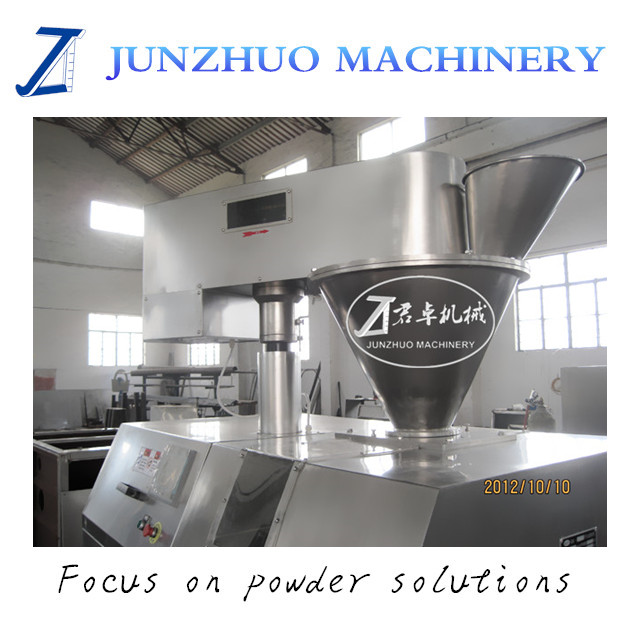
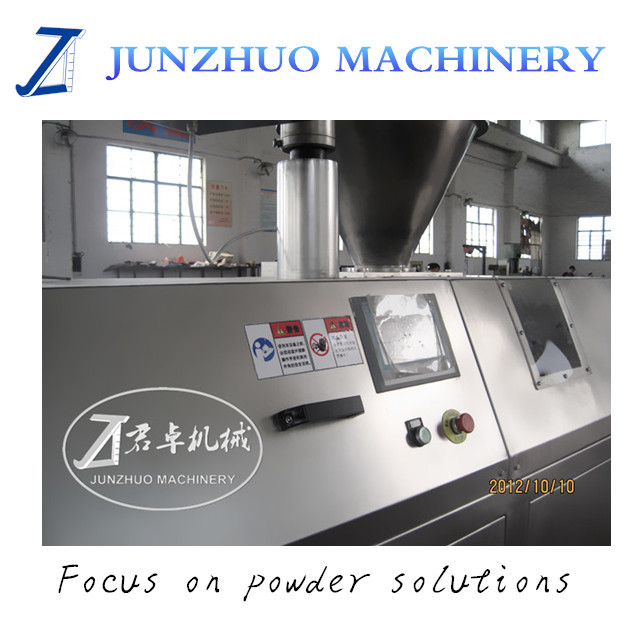
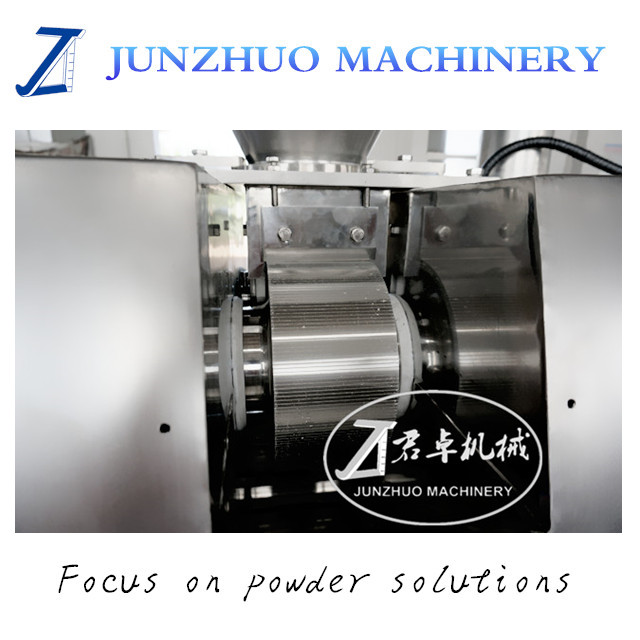
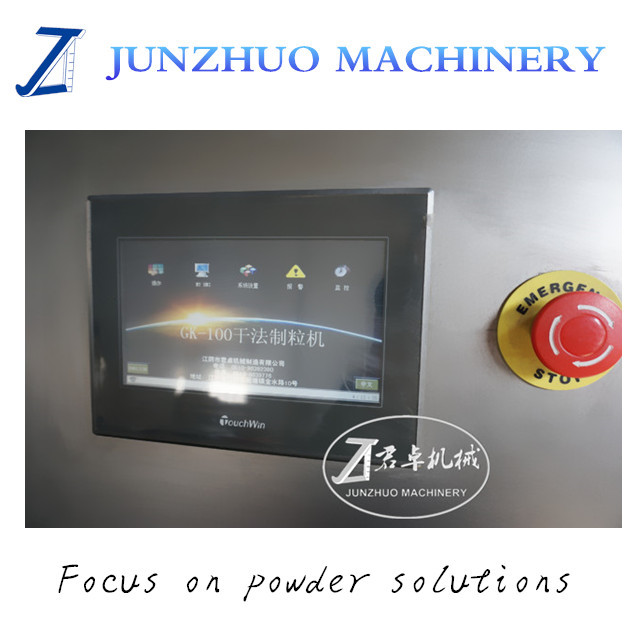
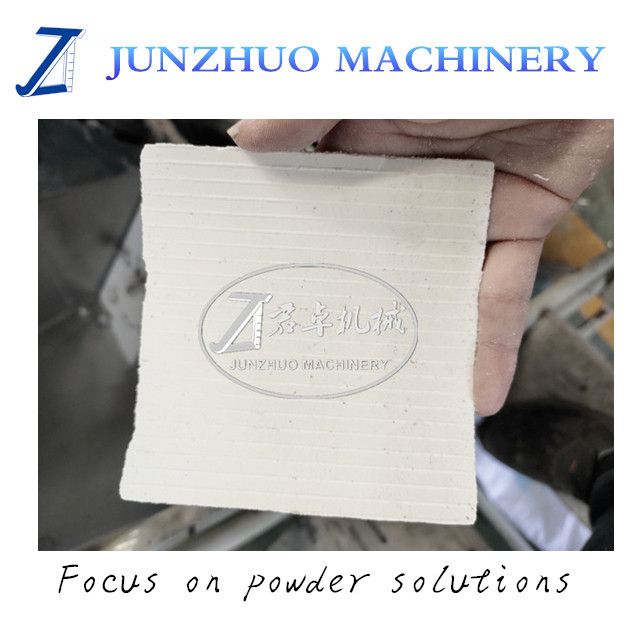

Roll Compactor (RC Machine) , we usually called it dry granulator in Chinese , it is a versatile densification and dry granulation machine that produces uniform compacted sheets with consistent hardness and increased density by compacting powdered material between two uniquely designed rolls.
Compared to wet granulation, roll compaction is a simple and cost effective dry granulation method used to bind smaller particles together to form a bigger mass to ease processing, decrease dust, improve flow ability and improve material distribution.
Application: roll compaction is traditionally used in the metallurgical industry to produce metal sheets, the mining industry to produce coal briquettes from waste coal powder, the mineral industry to crush rocks, the agricultural industry to make fertilizer pellets by briquetting, and the pharmaceutical industry to produce granules for tabletting. JUNZHUO MACHINERY provide sample test according to your requirement.
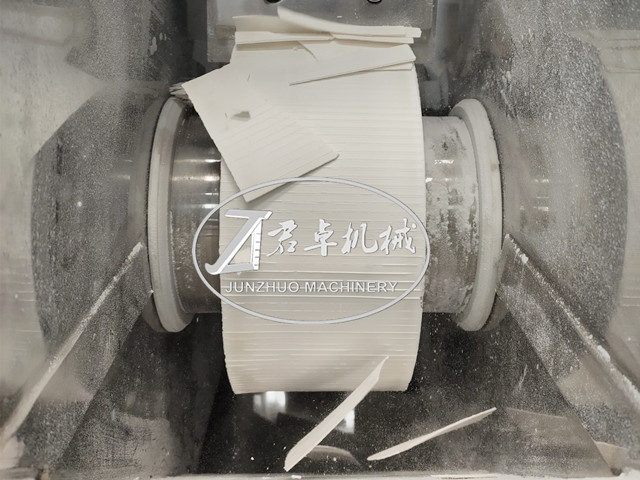
1. Material is fed between two counter-rotating roll presses.
2. The rolls apply extreme pressure, to press the material into a sheet-like form.
3. This sheet of material is then fed through a granulator, where it is broken up into uniformly sized granules.
4. Output is depended upon the mesh size and material density.
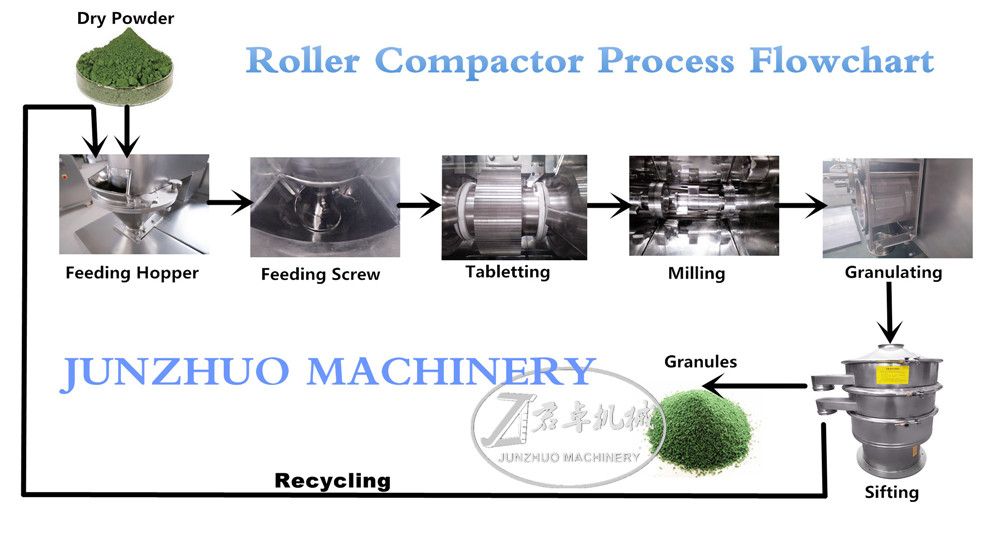
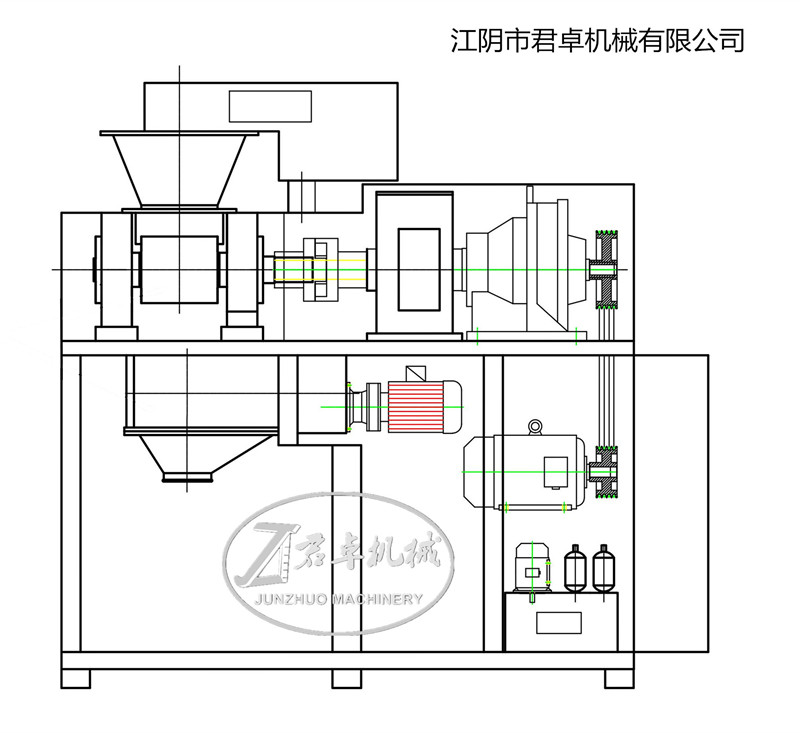
Normal type one is suitable for low cost, single or few materials need to change. (GK30 to GK500)
| Model | Output of sheet(kg/h) | Output of granule(kg/h) | Granules diameter (mm) | Total power (kw) | Feed Screw Speed (r/min) | Roll speed(r/min) | Overall size(mm) | Approx. weight (kg) |
| GK-30 | 3~10 | 0.5~2 | 0.5~3 | 2.5 | 6~33 | 4~25 | 880*550*1300 | 550 |
| GK-60 | 20~100 | 5~40 | 0.5~2.5 | 4.5 | 6~65 | 4~25 | 1085*650*1600 | 750 |
| GK-80 | 80~150 | 20~50 | 0.5~4 | 8.5 | 6~60 | 4~25 | 1600*1000*2300 | 1800 |
| GK-100 | 120~200 | 40~100 | 0.5~4 | 12.5 | 6~60 | 4~25 | 1800*900*2300 | 2000 |
| GK-120 | 150~250 | 75~100 | 0.5~4 | 12.5 | 6~60 | 4~25 | 1880*1020*2300 | 2300 |
| GK-150 | 200~350 | 100-150 | 0.5~4 | 18 | 5~50 | 4~25 | 2200*1050*2350 | 2800 |
| GK-200 | 250~500 | 120-300 | 1~5 | 24 | 5~50 | 5~22 | 2500*2150*2750 | 6500 |
| GK-250 | 300~700 | 200-300 | 1~10 | 27 | 5~45 | 5~22 | 2800*1800*2900 | 6800 |
| GK-300 | 400~1000 | 150-400 | 1~10 | 30~40 | 5~40 | 5~22 | 3000*2000*3000 | 7000 |
| GK-400 | 500~1200 | 300-800 | 1~10 | 42 | 5~40 | 5~20 | 3400*1800*3500 | 7200 |
| GK-500 | 600~1500 | 400-1200 | 1~10 | 42~45 | 5~40 | 5~20 | 3500*1800*3500 | 7800 |
1. No water or any organic solvents. Therefore, this method is especially attractive for drugs, which are moisture or heat sensitive.
2. Suitable for compounds that either have a low melting point or degrade rapidly during heating, as the method does not involve any drying step.
3. Forming porous tablets thus allowing water to penetrate more easily into the tablet. This leads to improved disintegration behavior of tablets.
4. Roll compaction technique provides an efficient and easily automated process, which is environmentally friendly.
5. Low operational cost.
6. Dust problems are minimized or avoided and the die filling during tableting is improved.
7. Roll compaction/dry granulation can be used, if the drug or the excipient is poorly flowing or sensitive to heat or moisture.
8. It can also be used for densification of powders prior to encapsulation.
9. Control particle hardness and provide granule integrity during conveying and processing steps.
10. Control dust and reduce environmental risk, waste and cross-contamination.
After granulation(Different materials in different application). It is ok for testing raw material if you can send sample to us.
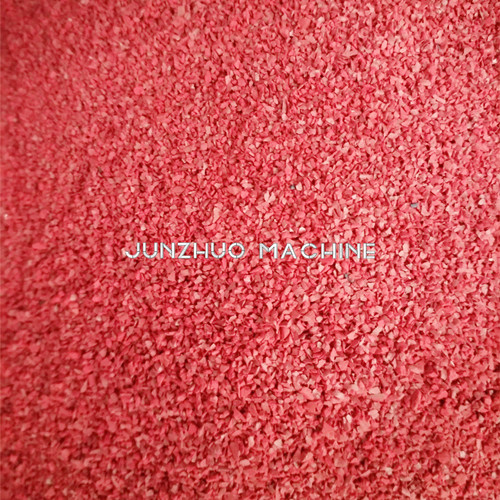 Food Color | 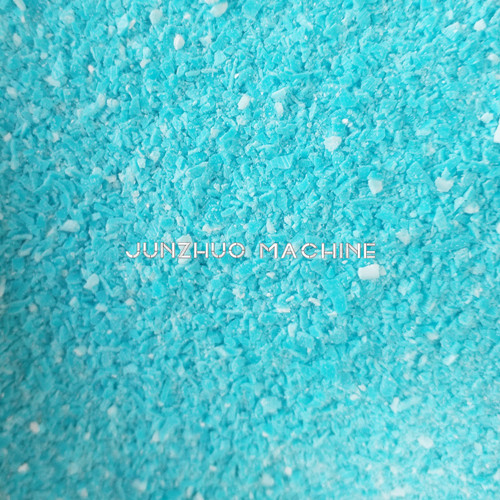 Catalyst | 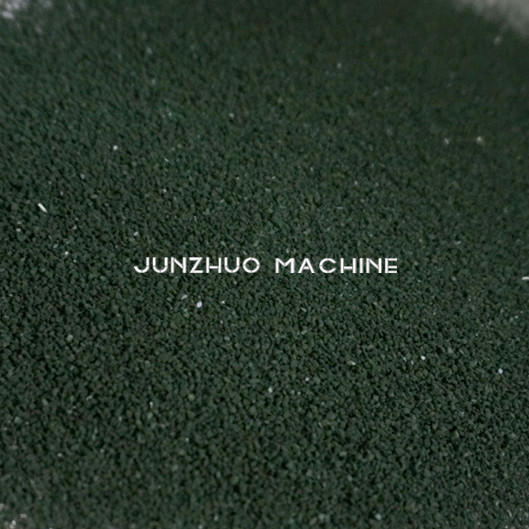 Chinese Herb |
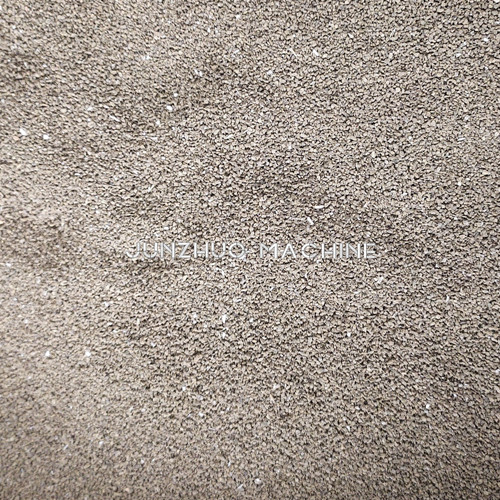 Ginseng |
| 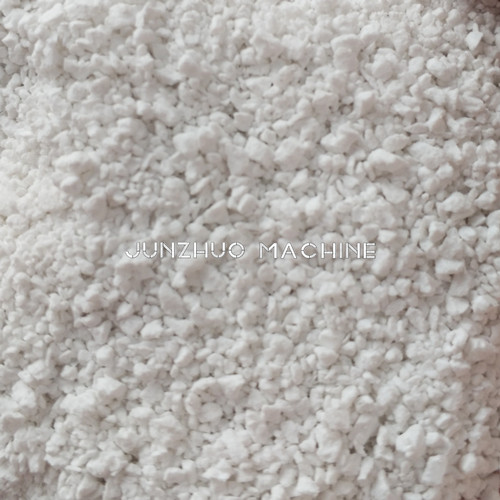 SiO2 |
By continuing to use the site you agree to our privacy policy Terms and Conditions.